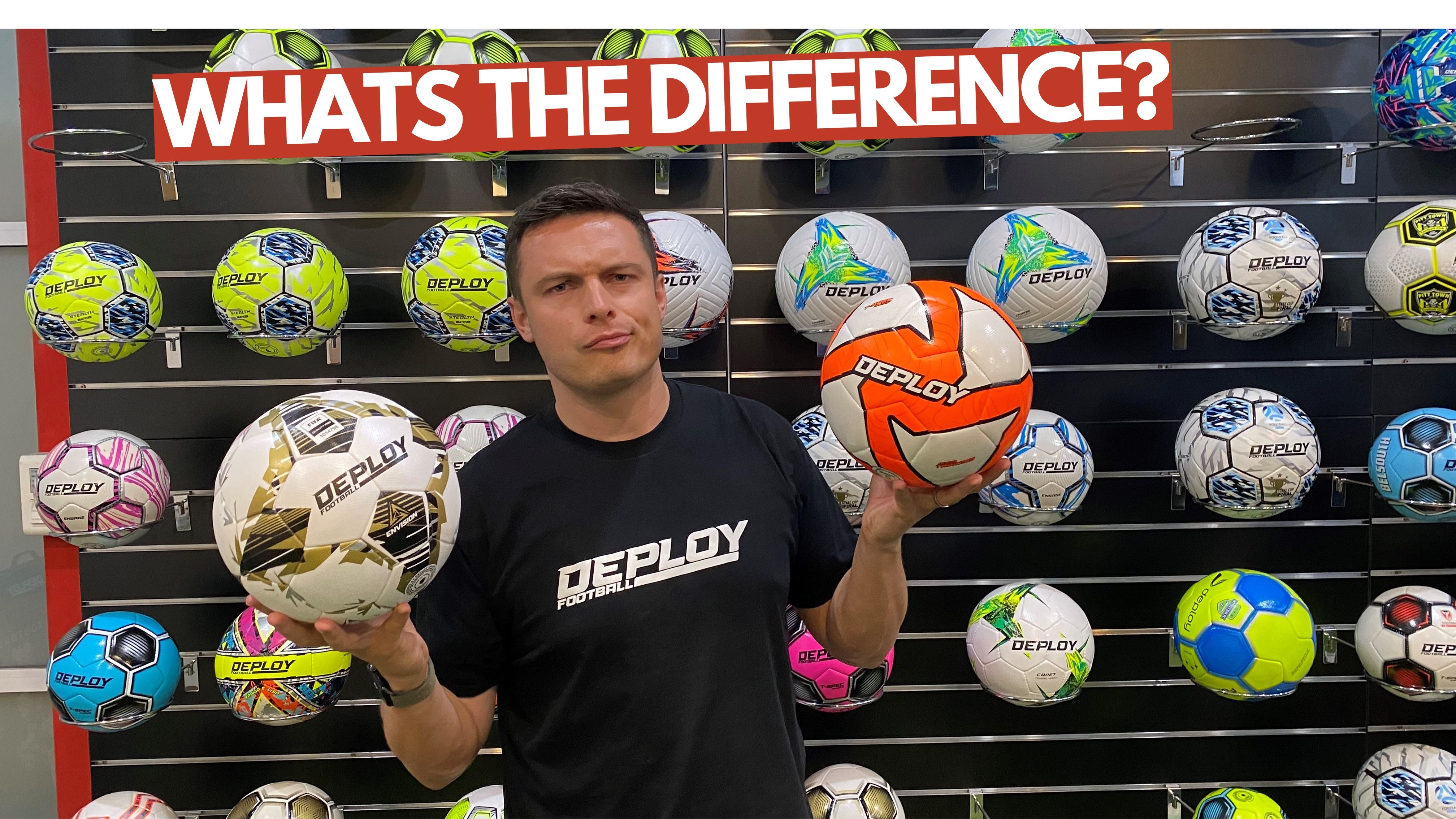Thermo Bonded v's Stitching - Whats the difference?
A question we're asked every day is, "What's the difference between thermo-bonded footballs and stitched footballs?"

Simply put, thermo-bonding is a process involving heat and pressure to bond the panels together, creating a seamless outer surface without visible stitching. Stitched footballs can be machine or hand-stitched, and the variation in construction methods impacts the ball's durability, feel, performance, as well as storage and shipping options.
Here's a brief summary of each ball type:
Thermo-Bonded Balls:
- Uses heat and pressure to bond the panels.
- Generally more robust and less prone to splitting or wear and tear.
- Offers greater accuracy, consistency, predictable flight paths, and better ball control.
- Reduces water absorption, maintaining true size and weight in all weather conditions.
- Typically made with 100% polyurethane material.
- Cannot be deflated; therefore, they must be stored and shipped whole.
General Ball Category: Pro Match & Elite Match

Hand-Stitched Balls:
- Panels are stitched by hand.
- Allows more flexibility with the amount of padding and backing layers used.
- Generally considered a more traditional football with a classic touch and feel.
- Typically made with 100% polyurethane material.
- Generally more durable than a machine-stitched ball.
- Can be deflated for storage and shipping.
General Ball Category: Elite Training & Match.

Machine-Stitched Balls:
- Panels are stitched by a machine.
- Generally of training ball quality.
- Typically made with thermo polyurethane.
- Less flexibility on the amount of cushion and backing layers used.
- Can be mass-produced.
- Can be deflated for storage and shipping.
General Ball Category: Training

In considering the best option for your club, thermo-bonded balls are optimal if budget isn't a concern. However, for overall value, they might not be the best choice. We recommend purchasing balls relevant to your programs to ensure the right ball is used. This is crucial for the overall player experience and significantly impacts their enjoyment of the game.
For instance, it's unnecessary to use thermo-bonded balls for junior team training sessions. Conversely, a senior match should never be played with a hand-stitched training ball!
Recommended Ball Types for Each Category:
- Elite Match Play: Thermo-Bonded
- Community Match: Thermo-Bonded or Hand-Stitched
- Junior Match: Hand-Stitched
- Elite Training: Thermo-Bonded (we recommend training with the balls used in play)
- Community Training: Hand-Stitched or Machine-Stitched
- Junior Training: Machine-Stitched



